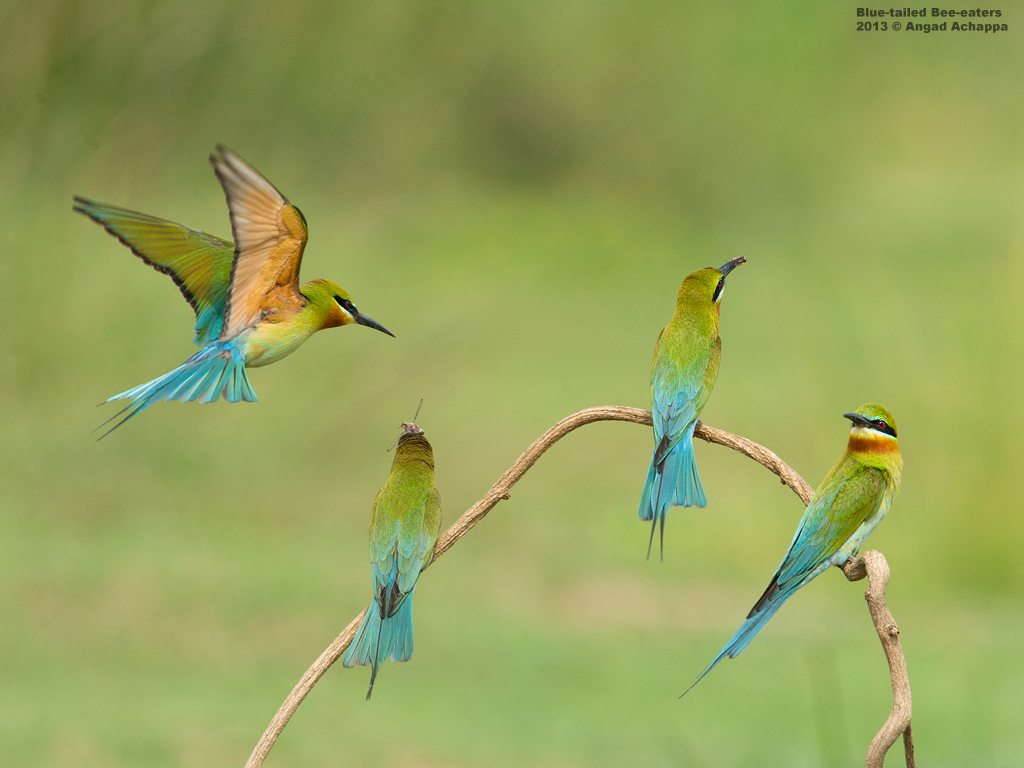

Xylocopa caerulea, the blue carpenter bee, engaged in nectar robbing Ecological significance virginica is by far the more widely distributed species. Three more species are primarily western in distribution, X. In the United States, two eastern species, Xylocopa virginica and X. Males of many species have much larger eyes than the females, which relates to their mating behavior.

When closed, the bee's short mandibles conceal the labrum. The wing venation is characteristic the marginal cell in the front wing is narrow and elongated, and its apex bends away from the costa. Males of some species of carpenter bees have a white or yellow face, unlike bumblebees, while females lack the bare corbicula of bumblebees the hind leg is entirely hairy. Non-professionals commonly confuse carpenter bees with bumblebees the simplest rule of thumb for telling them apart is that most carpenter bees have a shiny abdomen, whereas bumblebee abdomens are completely covered with dense hair. The confusion of species arises particularly in the common names in India, for example, the common name for any all-black species of Xylocopa is bhanvra (or bhomora - ভোমোৰা - in Assamese), and reports and sightings of bhanvra or bhomora are commonly misattributed to a European species, Xylocopa violacea however, this species is found only in the northern regions of Jammu and Kashmir and Punjab, and most reports of bhanvra, especially elsewhere in India, refer to any of roughly 15 other common black Xylocopa species in the region, such as X. Males of some species differ confusingly from the females, being covered in greenish-yellow fur. Some differ only in subtle morphological features, such as details of the male genitalia. Many species in this enormous genus are difficult to tell apart most species are all black, or primarily black with some yellow or white pubescence. He derived the name from the Ancient Greek xylokopos/ξυλοκὀπος "wood-cutter". The French entomologist Pierre André Latreille described the genus in 1802. The main exceptions are species in the subgenus Proxylocopa, which dig nesting tunnels in suitable soil. The common name "carpenter bee" derives from their nesting behavior nearly all species burrow into hard plant material such as dead wood or bamboo. The genus includes some 500 bees in 31 subgenera. This would be a beautiful addition to your home or office.Carpenter bees are species in the genus Xylocopa of the subfamily Xylocopinae. Please visit our ethics pages in the menu for details on the type of projects we work with. Where do we source our insect specimens? All of our specimens are purchased from conservation farming projects. Please Be Aware: The specimen that you will receive may differ in size, shape or colour very slightly since you are purchasing a natural product. Its wingspan reaches 4 - 5 centimetres (1.5 - 1.9 in).ĭistribution: Xylocopa caerulea can be found in Java, Indonesia.įrame: Wooden box frame with glass window and hanging clips - handmade in our workshop. Carpenter bees make nests by tunnelling into wood. The Blue Carpenter bee is from the family of Apidae genus of Xylocopa. The Latin and region name are printed underneath the specimen.

A huge Blue Carpenter bee in a handmade wooden frame mounted on high-quality acid-free conservation board.


 0 kommentar(er)
0 kommentar(er)
